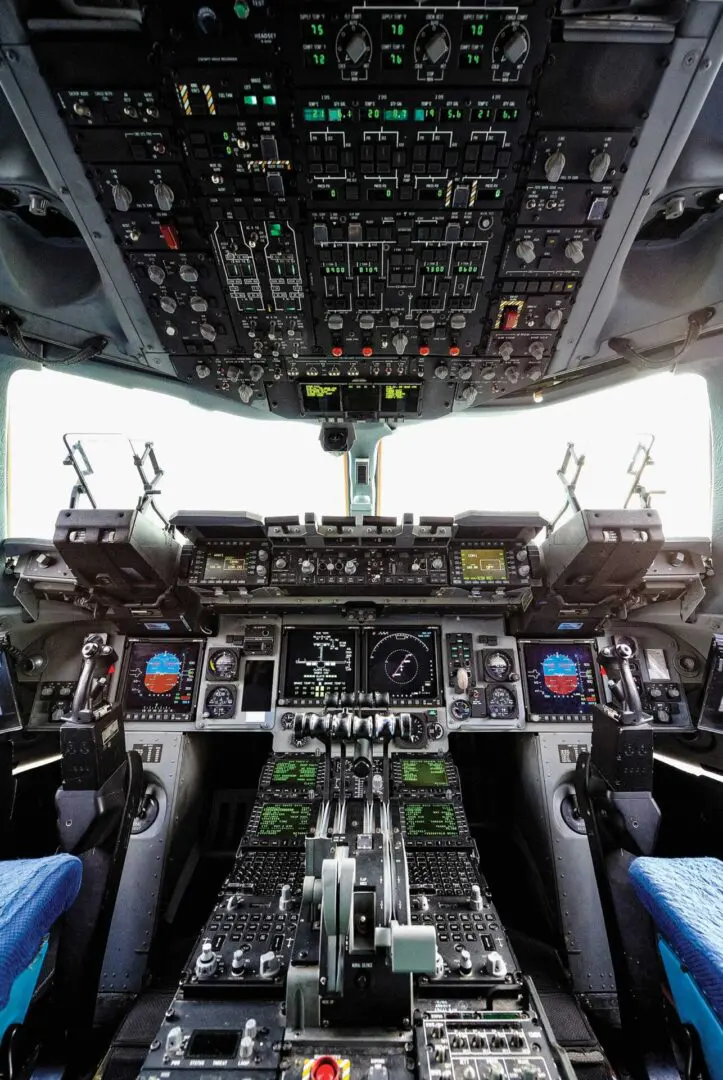How Psychologists Helped Make Today’s Planes Safer
By MS. CHRISTINE WALSH, STAFF WRITER
Human performance cannot be disconnected from the design of work, machinery, and operating environment. The Air Force’s history has been highlighted by the efforts of pioneers who recognized the value of designing for human performance—particularly the early psychologists who helped the Air Force adopt human-oriented design principles.
Alphonse Chapanis was one such pioneer. He was born March 17, 1917, in Meriden, Connecticut. He earned a Bachelor of Arts from Connecticut College in 1937, and his senior thesis work led him to an assistantship in prominent psychologist Walter Miles’ laboratory at Yale University. Although originally drawn to mathematical and experimental work, Chapanis quickly learned about the usefulness of applied psychology. In 1942, Chapanis completed his Master of Arts, became a lieutenant in the U.S. Army Air Corps, and trained as an aviation physiologist. Soon after, Chapanis completed his PhD from Yale and became the first military research psychologist at the Army Air Force’s Aero Medical Laboratory (AML) at Wright Field in Dayton, Ohio.
During World War II, Chapanis’ aviation psychology work at AML addressed a variety of user interface designs, especially visual obstacles encountered when piloting aircraft. Chapanis assessed luminescent materials for cockpit displays, tested optical distortions in aircraft windscreens, and carried out important studies on night vision, dark adaptation, field-of-view, and depth perception. On a temporary assignment, Chapanis assisted the U.S. Army’s Armored Medical Research Laboratory at Fort Knox, Kentucky, creating a night vision training program for armored ground forces. At AML, Chapanis’ detailed investigation of aviation accidents identified that unsuitable design, not pilot error, actually caused many crashes attributed to pilots. His influential applied psychology work laid the foundation for systematic human engineering studies of human-machine interface design issues for advanced military system operators.
Among Chapanis’ various projects related to flight, he studied displays appropriate for night flying, pilot blackouts under high g-forces, and high-altitude flying issues. During World War II, there was a mysteriously high frequency of plane accidents with P-47s, B-25s, and especially Boeing B-17 bombers crashing upon landing. The planes were operating as designed, and the pilots were exceptionally trained but made basic mistakes. Chapanis observed that the landing flaps and landing gear had nearly indistinguishable toggle switches or levers placed side-by-side and operated in sequence. In high-stress aviation situations, pilots often retracted the gear instead of the flaps, a problem that rarely occurred with pilots of other types of aircraft. He also observed that the corresponding controls on the C-47 were not in close proximity and that their activation methods were very different; therefore, C-47 pilots were not pulling up the wheels after landing. Chapanis introduced “shape coding,†a system ensuring all knobs and levers were different shapes and sizes. As a solution, he attached a small rubber-tired wheel to the landing gear lever and a small wedge-shaped end to the flap lever. The confusion that had contributed to crashes while landing and taxiing the B-17 “Flying Fortresses†was virtually eliminated. When the war was over, the memory-aiding shape-coded wheel and flap controls were standardized globally, as were the power control lever heads that could be distinguished by touch, which are found in conventional airplanes today.
According to Fitts and Jones, what had been deemed “pilot error†was, in fact, a discrepancy between assumptions that people had about how others’ work should be done and how the work was actually done.
Building on Chapanis’ accomplishÂments, Walter F. Grether II and Paul M. Fitts arrived at Wright Field in July 1945 to form AML’s psychology branch. The laboratory eventually became the U.S. Air Force’s Human Engineering Division, a cutting-edge laboratory. It lives on at Wright-Patterson Air Force Base in Ohio today as the Airman Systems Directorate of the U.S. Air Force Research Laboratory.
In 1947, Fitts and Richard Jones studied details of 460 errors made in operating aircraft controls through interviews and written reports. They remarked, “It has been customary to assume that prevention of accidents due to materiel failure or poor maintenance is the responsibility of engineering personnel and that accidents due to errors of pilots or supervisory personnel are the responsibility of those in charge of selection, training, and operations.†Fitts and Jones took a unique approach, basing their research on the proposition that “a great many accidents result directly from the manner in which equipment is designed and where it is placed in the cockpit.†According to Fitts and Jones, what had been deemed “pilot error†was, in fact, a discrepancy between assumptions that people had about how others’ work should be done and how the work was actually done.
Fitts and Jones studied an assortment of problems, including operating the wrong control, failing to adjust a control properly, forgetting to operate a control, and being unable to reach a control when necessary. They confirmed that the flap-gear substitution error and many other “pilot errors†were actually cockpit design problems. Fitts and Jones concluded, “Practically all pilots of present-day AAF [Army Air Force] aircraft, regardless of experience or skill, report that they sometimes make errors in using cockpit controls. The frequency of these errors, and therefore the incidence of aircraft accidents, can be reduced substantially by designing and locating controls in accordance with human requirements.†They cite design adjustments for the most effective configuration of control knobs and displays, such as standardization, simplification, sequencing, interlocks, and other ways to fit controls to human needs.
Today we have ubiquitous designs on video game controllers, vehicle dials and knobs, and even the virtual buttons on smartphones. The differently shaped buttons and subtle texture differences help users distinguish between them, reducing errors. Thanks to the pioneers in human-oriented design principles, the idea of shape coding lives on today, not only in airplanes’ landing gear and wing flaps but also in our everyday lives.

